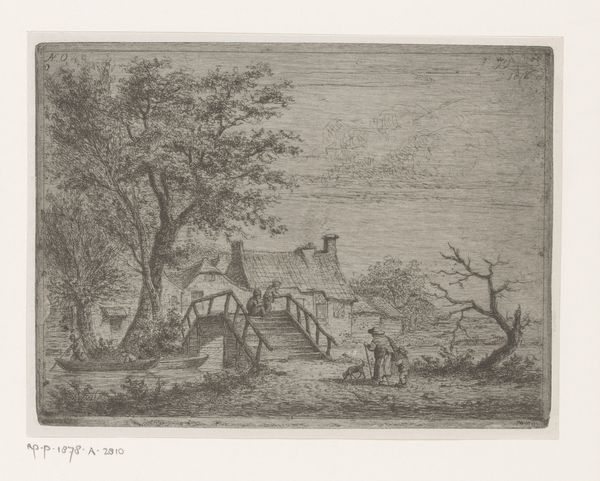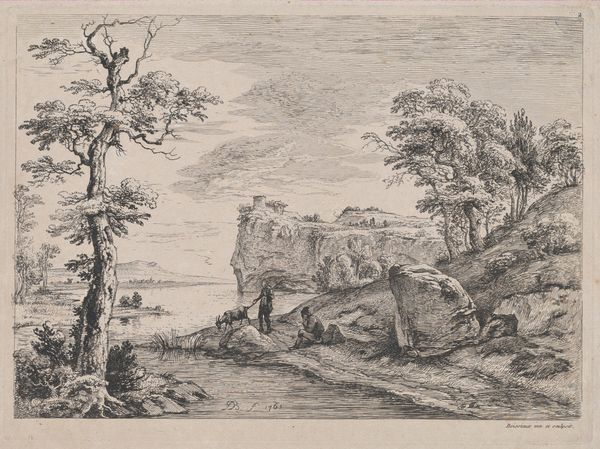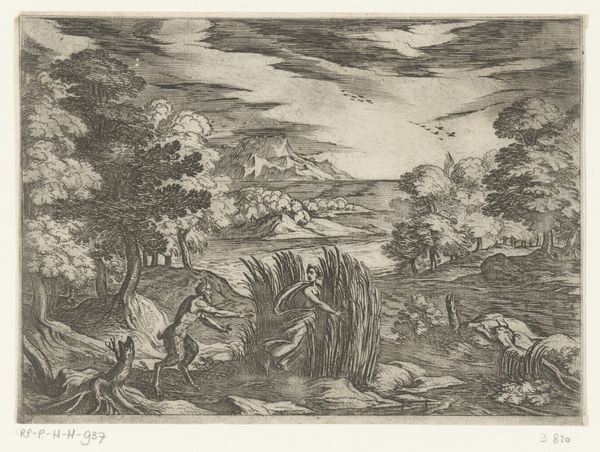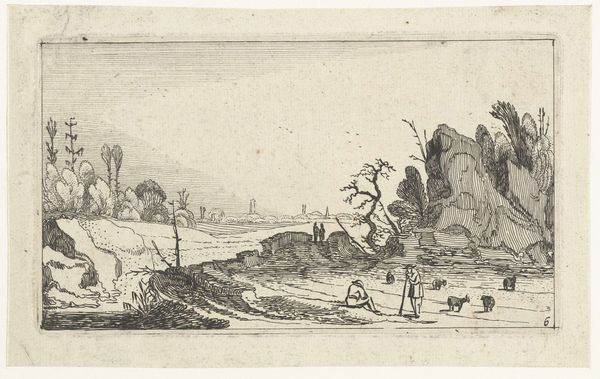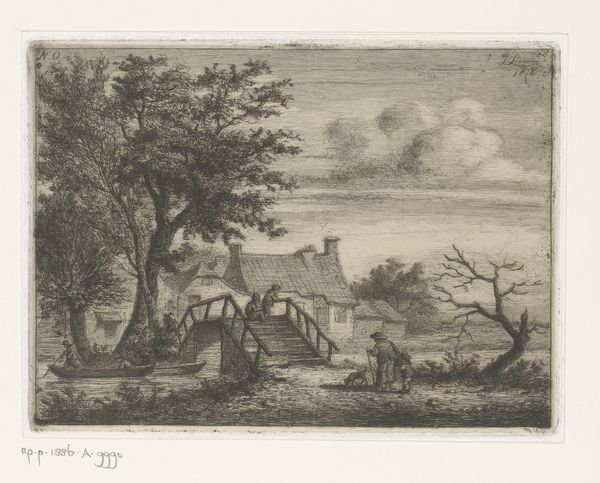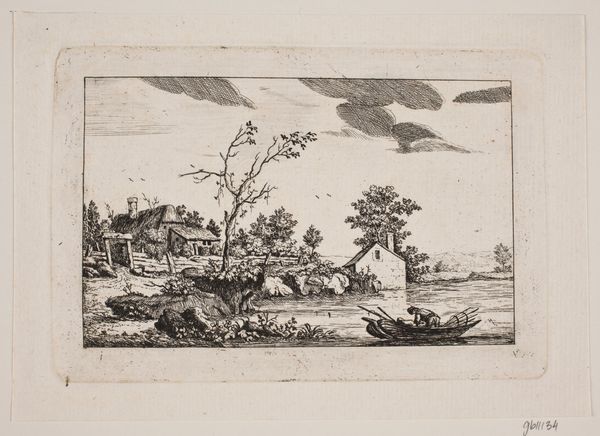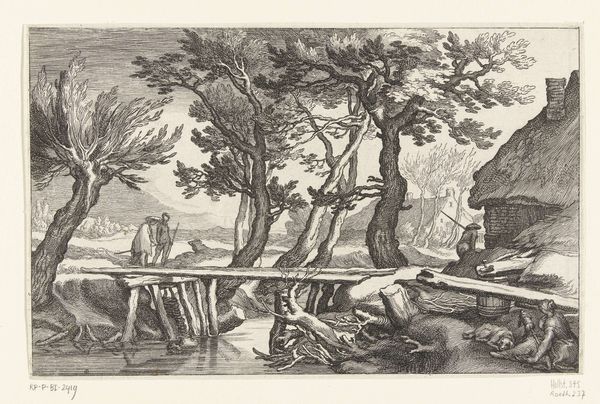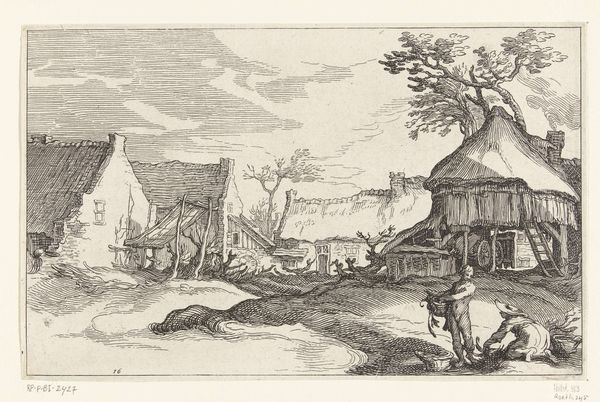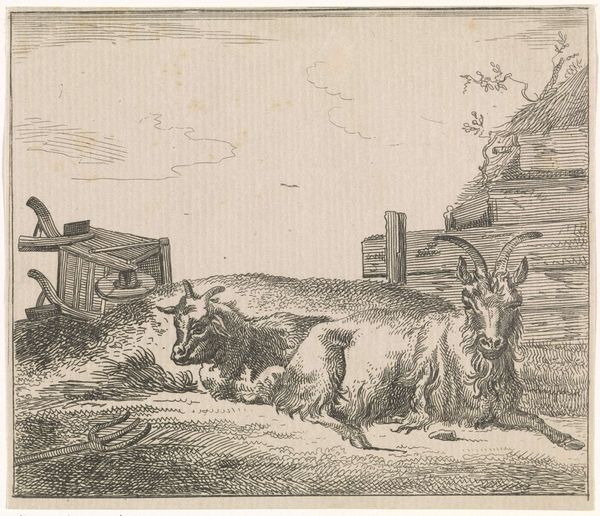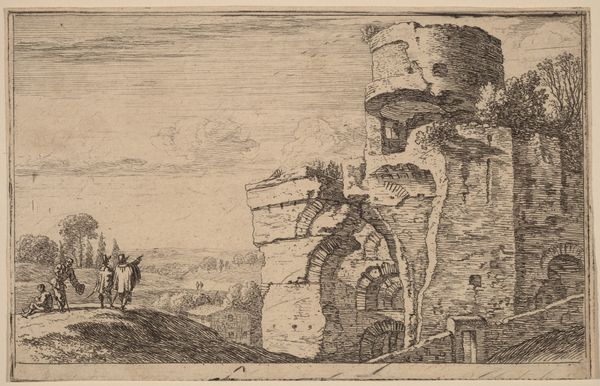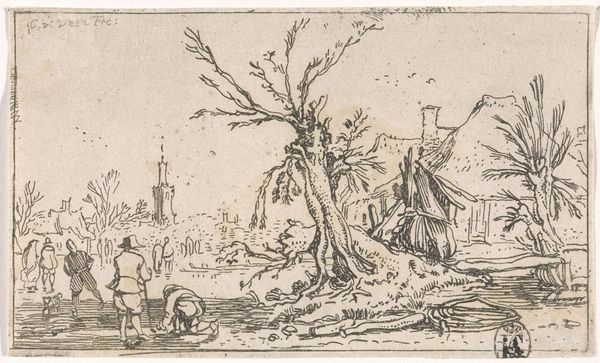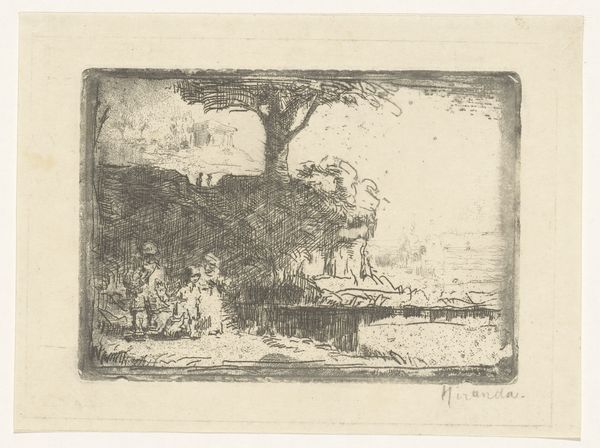
drawing, etching, ink
#
drawing
#
baroque
#
pen drawing
#
pen sketch
#
etching
#
landscape
#
waterfall
#
form
#
ink
#
rock
#
line
#
realism
Dimensions: height 57 mm, width 92 mm
Copyright: Rijks Museum: Open Domain
Editor: This is a 17th-century etching titled "Rocky Landscape with a Path Along a Waterfall" by an anonymous artist. The lines and intricate details create a rather wild scene. How would you describe its formal composition? Curator: The linear complexity is immediately striking. Consider how the artist uses hatching and cross-hatching to construct a sense of depth and volume. The composition is not simply mimetic; rather, the landscape elements—the rocks, the waterfall, the figures—serve as opportunities to explore linear rhythms and tonal variations. Do you notice how the repeated use of diagonal lines amplifies the dynamism within the piece? Editor: Yes, the diagonal lines certainly draw the eye toward the center. What is the function of realism in a baroque drawing? Curator: The ‘realism’ evident here must be qualified. It's not a photographic realism. Instead, it operates through an exaggeration of forms and an intensification of detail. Line is the artist's primary tool. Observe how it is not used to just delineate form, but also to create texture and atmosphere. Think about how the ink itself, the material substance of the lines, constitutes a key formal element. How do you respond to the textural diversity achieved through varied penmanship? Editor: The texture makes it very interesting, I now notice the differences in detail more clearly! Thank you. Curator: Indeed. The artist prioritized the tactile and optical sensations achievable through their command of the pen and ink. Form transcends mere representation, achieving its own kind of vibrant reality.
Comments
No comments
Be the first to comment and join the conversation on the ultimate creative platform.

